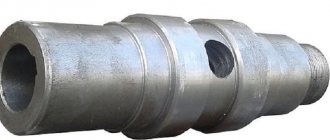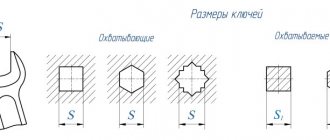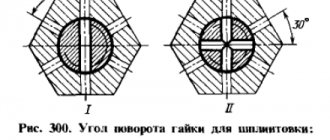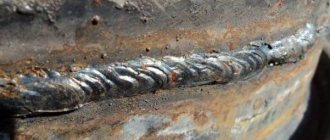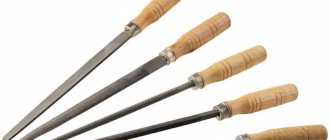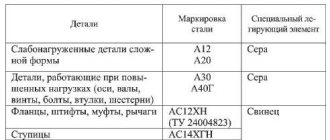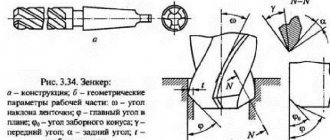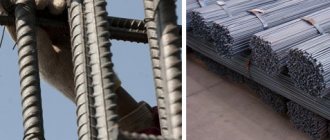Profile steel pipes
Classification
By manufacturing method:
- hot-formed;
- cold-worked;
- electric welded;
- electric-welded cold-deformed.
According to the material of manufacture:
- A - standardization of mechanical properties according to GOST 380-88;
- B - standardization of mechanical properties and chemical composition according to GOST 1050-74,380-71.
According to surface condition:
- galvanized steel;
- non-galvanized (black).
Cross section:
We supply electric-welded square section pipes of all sizes. The greatest demand at a good price per meter is for profile pipes of sizes 50×25, 60×30, 80×40, 100×150 mm, as well as square steel pipes 100×100, 40×40, 120×120, 20×20, 15× 15, 50×50, 60×60. Galvanized products resist corrosion better. You can buy profile pipes of all existing sizes!
Square
They are produced hot-deformed and cold-deformed, electric-welded and electric-welded cold-deformed. In the production of rolled metal, steel 10, 08kp, 10ps, 20, St2sp, St2ps, St4sp, St4ps, St4kp is used. No heat treatment is performed. The assortment complies with GOST 8639-82.
The size is determined by the length of the square wall. For example, if the side length is 100 mm, then the designation “square profile steel pipe 100×100” will be considered correct. Possible sizes: 10; 15; 20; 25; thirty; 35; 40; 42; 45; 50; 60; 70; 80; 90; 100; 110; 120; 140; 150 mm. Wall thickness: 1.0; 1.5; 2.0; 2.5; 3.0; 3.5; 4.0; 5.0; 6.0; 7.0; 8.0; 9.0; 10.0 mm.
Square stainless and black profile pipes are available in all sizes: 20×20, 15×15, 25×25, 30×30, 40×40, 50×50, 60×60, 80×80, 100×100, 120×120 , 140×140, 150×150, 160×160, 180×180, 250×250, 300×300.
- unmeasured length: 1.5-9 m;
- measured length: 5-9 ms maximum deviation for total length +100 mm;
- length of multiple measured: any multiplicity not exceeding the established lower limit.
The weight of a profile square pipe is calculated taking into account the steel density of 7.85 g/cm3, the radius of curvature can be different.
An example of the designation of a square profile pipe 40×40, wall thickness 3.0 mm, length multiple of 1250 mm, made of steel 10, with a chemical composition according to group B (GOST 13663-86):
| Pipe | 40×40×3×1250 cr GOST 8639-82 ———————- B 10 GOST13663-86 |
Weight
Table No. 1 of the weight of steel pipes.
| No. | Options. Profile square pipes | Length 6m | Weight meter/linear. |
| 1 | 15x15x1.0 | 0, 478 | |
| 2 | 15x15x1.2 | 0,500 | |
| 3 | 15x15x1.5 | 0,600 | |
| 4 | 20x20x1.2 | 0,680 | |
| 5 | 20x20x1.5 | 0,840 | |
| 6 | 20x20x2 | 1,09 | |
| 7 | 25x25x1.2 | 0,870 | |
| 8 | 25x25x1.5 | 1,06 | |
| 9 | 25x25x2 | 1,38 | |
| 10 | 30x30x1.5 | 1,30 | |
| 11 | 30x30x1.5 | 1,60 | |
| 12 | 40x40x1.5 | 1,79 | |
| 13 | 40x40x2 | 2,30 2,80 | |
| 14 | 40x40x2.5 | 3,33 | |
| 15 | 40x40x3 | 4,20 | |
| 16 | 40x40x4 | 3,60 | |
| 17 | 50x50x2.5 | 3,65 | |
| 18 | 60x60x2 | 3,58 | |
| 19 | 80x80x3 | 12 m | 7,12 |
| 20 | 100x100x3 | 12 m | 9,01 |
The weight of the professional pipe will depend on its length and wall thickness. This point must be taken into account when choosing them.
Video: types and types of profile pipes and their technical characteristics are presented. Watching this video will help you decide on the choice of professional pipes specifically for your situation. Weight must be taken into account when constructing massive metal structures; if this is your case, then use our tables.
Profile pipe
Table No. 2 weights of steel profile pipes.
| No. | Parameters Profile rectangular | Length 6m | Weight meter/linear. |
| 1 | 20x10x1.2 | 0, 500 | |
| 2 | 25x10x1.5 | 0,600 | |
| 3 | 28x25x1.2 | 0,930 | |
| 4 | 30x15x1.5 | 0,950 | |
| 5 | 40x20x1.5 | 1,30 | |
| 6 | 50x25x2 | 1,66 | |
| 7 | 60x30x2 | 2,64 | |
| 8 | 80x40x2 | 3,50 | |
| 9 | 100x50x3 | 12 m | 6,50 |
| 10 | 100x50x4 | 12 m | 8,69 |
| 11 | 120x60x3 | 12 m | 11,40 |
| 12 | 120x60x4 | 12 m | 10,55 |
| 13 | 140x60x2 | 12 m | 11,80 |
| 14 | 140x60x5 | 12 m | 14,58 |
| 15 | 150x100x5 | 12 m | 18,4 |
| 16 | 160x80x5 | 12 m | 17.69 |
| 17 | 160x120x5 | 12 m | 20,80 |
| 18 | 180x100x6 | 12 m | 24.69 |
| 19 | 200x120x5 | 12 m | 23.98 |
| 20 | 230x160x6 | 12 m | 46,11 |
Rectangular
Rectangular profile pipes are produced with a range in accordance with GOST 8645-68. The length and maximum deviations in size correspond to GOST 8639-82.
Profile pipes of this section are most often used in construction as metal beams. Four stiffening ribs, low specific gravity and high bending strength allow them to withstand increased loads. Profile rectangular steel pipes are fastened by electric arc welding. In addition to high strength, such products are more economical (up to 25% compared to round ones) and easier to install, allowing the creation of more complex engineering structures. Fits well on flat surfaces. They are also used to create durable frames in furniture production, the automotive industry, for the construction of durable structures, supports, where the low weight of the profile is a decisive factor, for example, in outdoor advertising.
- width: 10, 20, 25, 30, 35, 40, 42, 45, 50, 60, 70, 80, 90, 100, 110, 120, 140, 150, 180 mm;
- height: 10, 15, 20, 25, 30, 40, 50, 60, 70, 80, 100, 120, 150 mm;
- thickness: 1, 1.5, 2, 2.5, 3, 3.5, 4, 5, 6, 7, 8, 9, 10, 12 mm.
The most popular sizes of this profile are 40×80 and 40×100 mm; rectangular profiles of large diameter are also available.
An example of the designation of a rectangular profile pipe 40 mm x 25 mm x 3 mm, wall thickness 3.0 mm, length multiple of 1250 mm, made of steel 10, with a chemical composition according to group B (GOST 13663-86):
| Pipe | 40×25×3×1250 cr GOST 8645-68 ———————— B 10 GOST13663-86 |
Design values for rectangular profile pipes
GOST 28548-90 steel pipes. Terms and Definitions
The tables show the calculated values for rectangular profile pipes, or more precisely, for bent closed welded steel profiles of rectangular section in accordance with GOST 30245-2003. Profiles are manufactured on specialized mills by forming a round tubular section with a longitudinal weld and subsequent compression by rollers into a rectangular profile.
Figure 1. Cross section of a rectangular profile pipe (steel bent closed welded rectangular profile).
Table 1.1. Rectangular profile pipes with a height of 50-80 mm
Table 1.2. Rectangular profile pipes with a height of 80-100 mm
Table 1.3. Rectangular profile pipes with a height of 120-150 mm
Table 1.4. Rectangular profile pipes with a height of 160-180 mm
Table 1.5. Rectangular profile pipes with a height of 180-220 mm
Table 1.6. Rectangular profile pipes with a height of 220-300 mm
Table 1.7. Rectangular profile pipes with a height of 300-400 mm
Notes:
1. Legend: h – profile height, b – profile width, F – cross-sectional area, R – radius of external corner rounding, I – moment of inertia, W – moment of resistance, i – radius of inertia.
2. Radius of external corner rounding R = 2.0t at t ≤ 6.0 mm, R = 2.5t at 6.0 10.0 mm.
3. The mass of 1 m of profile length is determined by the cross-sectional area, with a steel density of 7.85 g/cm 3 .
The main geometric characteristics of sections for rectangular profile pipes of small cross-section are given separately.
I hope, dear reader, the information presented in this article has helped you at least a little understand the problem you have. I also hope that you will help me get out of the difficult situation I recently found myself in. Even 10 rubles of help will be of great help to me now. I don’t want to burden you with the details of my problems, especially since they are enough for a whole novel (at least it seems so to me, and I even started writing it under the working title “Tee”, there is a link on the main page), but if I’m not mistaken in your conclusions, then there will be a novel and you may well become one of its sponsors, and possibly heroes.
For terminals, Yandex Wallet number 410012390761783
For Ukraine – hryvnia card number (Privatbank) 5168 7422 0121 5641
Design values for rectangular profile pipes
The tables show the calculated values for rectangular profile pipes, or more precisely, for bent closed welded steel profiles of rectangular section in accordance with GOST 30245-2003.
Introduction
This standard was developed on the basis of interstate standards GOST 13663, GOST 8639, GOST 8642, GOST 8644 and GOST 8645, as well as a generalization of domestic and foreign experience in the use of pipes.
Pipes manufactured according to GOST 13663, GOST 8639, GOST 8642, GOST 8644 and GOST 8645 have the same scope of application as pipes for metal structures. Therefore, in this standard, developed on the basis of the mentioned standards, the requirements for these pipes are combined.
Compared to GOST 13663, GOST 8639, GOST 8642, GOST 8644 and GOST 8645 in this standard:
— classification of pipes by strength classes has been introduced;
— the range of pipes has been expanded: by profile size - up to 500 mm, by wall thickness - up to 22.0 mm, by profile shape - with the inclusion of round pipes;
— two pipe manufacturing precisions have been established: normal and increased;
Manufacturing of square steel pipes
Large-scale production of steel profile pipes must comply with the standards. But there are other ways to obtain square pipes, the so-called artisanal ones. For example, rolling a round pipe. This method does not guarantee reliable operation of the product in the future and does not comply with GOST, so it is used only by craftsmen in their subsidiary plots.
Square steel pipe manufacturing factories
In Russia, large metallurgical plants are engaged in large-scale production of square pipes. Products are manufactured to order from a standard range of standard sizes. The customer chooses the method of obtaining and processing steel depending on the purpose of the future rolled product. There are more than 50 factories in the Russian Federation supplying pipe products.
Suppliers of profile square pipes in the Russian Federation are:
- "Agrisovgaz" Kaluga region.
- Almetyevsk Pipe Plant (Tatarstan).
- Amurmetal (Khabarovsk Territory).
- Barnaul mechanical press plant.
- Bor Pipe Plant (Nizhny Novgorod region).
- Brock-Invest-Service (Moscow).
- Wilsey-Plus (Kaluga).
- Volgatruboprofil (Kostroma region).
- Volzhsky Mechanical Plant.
- VTPZ (Volgograd region).
- Vyksa Metallurgical Plant.
- DZMT (Republic of Dagestan).
- Stroy-Profil LLC (Oryol region).
- ZSMK (Kemerovo region).
- LLC "Oktan" (Stavropol region).
- Isaevsky Machine-Building Plant (Kolomna).
- Royal Pipe Factory.
- Metallurg (Moscow).
- OJSC MTZ "Filit"
- Neftekamsk Pipe Plant.
- Metallinvest (Nizhny Tagil)
- NMZ named after Kuzmina (Novosibirsk).
- LLC "New Kuban Profile" (Krasnodar region).
- Pervouralsk New Pipe Plant
- Ryazan Pipe Plant and others.
The production of profile steel products is carried out in the Urals, Chelyabinsk, Yaroslavl, Ryazan, Bashkiria, and Altai Territory. There are many factories in the Moscow, Volgograd, Novosibirsk, and Sverdlovsk regions. The range of products varies - some companies sell pipes with a small cross-section (from 10x10 to 60x60), others - cross-sections over 80x80 mm.
Technology for rolling square profile pipes
The raw materials for seamless square pipes are round steel products with a wall thickness of 4 to 14 mm. Cold deformation produces products of lower quality, but this production method is less expensive and does not require powerful, expensive and large equipment.
During hot deformation of seamless profile pipes, the metal structure does not change, which is important for maintaining the strength properties of the product. Therefore, such products are of higher quality and are used in areas where heavy loads are applied.
During cold and hot deformation, different equipment is used, but the rolling method is similar: round pipes pass through rolls, as a result of which they are deformed, resulting in a square-section blank.
How electric-welded square steel pipes are produced
Strips are prepared from a flat metal sheet, which are converted by bending into a round pipe. Then the seam is welded and cleaned. The workpiece is rolled on rollers, which produces a square-shaped product. But this is not enough for further operation - the profile workpiece undergoes the necessary processing and hardening procedure. This is important to relieve excess stress on the metal after bending.
Square Pipe Steel
The main material for the manufacture of square profile pipes is unalloyed carbon steel according to GOST standards 380, 1050, 9045. But there are products that are made from alloy steel grades 09G2, 09G2S, 10HSND (in accordance with GOST 19281), grades 10G2, 30KhGSA (according to GOST 4543).
Technical requirements for profile pipes are regulated by GOST 13663-86. Here are the requirements for appearance, heat treatment of pipes, steel grades, standards for the mechanical characteristics of steel products, etc.
Rectangular steel profile pipes
Rectangular pipes are one of the most popular types of profiled steel products. They are used to create metal structures where significant loads are expected. Products of this cross-section have additional stiffening ribs, due to which their load-bearing capacity increases. A rectangular steel pipe is used as a pipeline element only in exceptional cases.
Rectangular pipes are designed for the construction of metal structures for various purposes
Production of profile products
Depending on the manufacturing technology, products of this type are divided into:
- electric welded pipes,
- seamless pipes.
The latter, in turn, are cold-drawn and hot-rolled. Let's take a closer look at the manufacturing technology of this product.
Electric welded products are made from flat steel sheet - strip. The manufacturing technology in this case looks like this:
- The strip coming from rolls is cut into strips of the required width, which are then rolled and wound onto a drum.
- The steel strip from the drum is fed to the rollers, where it is rolled into a pipe.
- The seam is connected by welding.
- After this, the product is given a rectangular shape on the calibration shafts.
- Then flaw detection is carried out, which involves quality control of the weld.
- At the final stage, the rectangular pipe is cut into pieces of the required length. They are necessarily inspected for the correctness of the geometry, which can be disrupted by significant wear of the rollers or the parts present on them are chipped. The products will be sent to the finished product warehouse only if no defects are found.
Seam welding of rectangular steel pipes is carried out in one of two ways:
- HF – welding with induction currents,
- TIG – welding in an inert environment.
The HF process is several orders of magnitude more productive, but the TIG technology provides the final product with higher strength characteristics. It is also possible to perform laser and plasma welding.
Profile pipes are produced in different ways, one of them is cold deformation
The raw materials for the production of seamless hot-deformed pipes are round blanks, which are monolithic steel cylinders called “rods”. The production process includes the following stages:
- Heating the rod in a metallurgical furnace.
- Then the workpiece is fed to a piercing unit, which turns the monolithic cylinder into a hollow one in the form of a sleeve.
- The hot and plastic sleeve passes through several groups of rollers, where it acquires the required diameter and the desired wall thickness. This is achieved by rolling on a mandrel and then stretching the workpiece.
- The formation of the required profile of rectangular steel pipes is carried out by calibrating the exact parameters of the sleeve.
- After cooling the product, pieces of a given length are cut.
Important! The temperature of the workpiece should slightly exceed the metal recrystallization rate. So the steel will acquire elasticity, which will allow it to be easily deformed.
According to the above-described scheme, cold-deformed profile pipe products are also produced. The difference is that immediately after leaving the piercing unit, the hollow workpiece (sleeve) is cooled with water. That is, all subsequent operations to form the pipe profile are carried out cold.
But you can’t do without heat treatment either. It is carried out at the final stage and is designed to relieve stress in the steel, which is always fixed during the production of pipe metal using cold deformation technology. If it is not leveled, the durability and strength of metal structures mounted on rectangular steel pipes will be significantly reduced.
Products made by cold or hot rolling are less common than welded pipes. And this despite the fact that the strength of the latter is inferior to this indicator of rolled products! Experts explain this phenomenon by its peculiarities, in particular, the considerable cost of cold and hot rolling technologies.
Welded pipes are more often used to create various metal structures, this is explained by their cheaper cost.
GOST and assortment
The range of seamless rectangular steel pipes includes products whose dimensions are presented in the table.
Rectangular steel profile pipes
Rectangular steel pipes. Production. Technologies: hot and cold rolling, welding. GOST and assortment. Size table. Rectangular stainless steel pipes.
